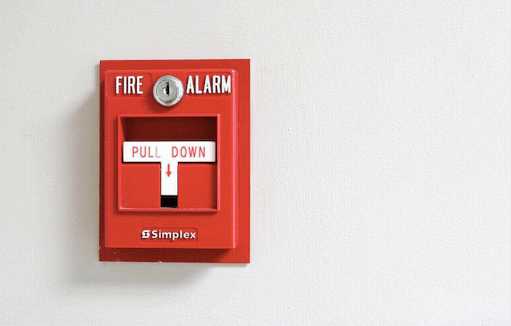Let me be clear with something right from the start. If a real life fire alarm goes off wherever you are, you should follow whatever instructions are in place for the environment you find yourself in at that moment.
Right, now we’ve got that out of the way, I want to tell you what I believe might be the secret ingredient to changing your life. It’s fire alarms and our response to them. I know that sounds weird – stick with me.
What Is The Secret To Changing Your Life?
Meet Sam. Sam works in a small office. When Sam hears the fire alarm go off, she immediately evacuates the building.
So, what’s wrong with this and how is this relevant to changing your life? Well firstly, in a real life fire there is absolutely nothing wrong with this and it would be the best course of action. However, for the purposes of this example, she made a crucial mistake.
Let’s say “A” is the fire alarm going off and “B” is Sam evacuating.
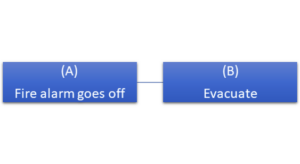
Now the issue here is that it might be a false alarm and it may not be necessary to evacuate at all. In this example, Sam is automatically reacting to “A” and then carrying out “B”. What needs to happen is that Sam needs to add in a “STOP” button, where she takes a moment to consider her options before making a choice about how she wants to react.
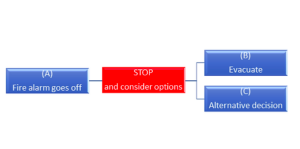
If you’re not confused by now, some of you may have realised where I’m going with this. If you can change the automatic way you usually think about or do something, it gives a whole load of alternate possibilities that could lead to a more content life.
This is best explained by the famous quote – “If you always do what you’ve always done, you’ll always get what you’ve always got”.
So let me give you an example.
Sam gets an email from her boss (A). She automatically thinks it’s going to be something bad and her thoughts spiral to the conclusion that she has lost her job and will lose her home because she won’t be able to afford her mortgage. She panics (B).
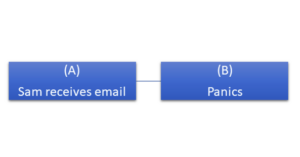
If Sam added a “STOP” button, it would give her some breathing space to identify an alternative. At this point, she could use a strategy to help her cope, such as the junk mail technique that I have previously written about.
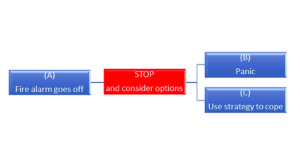
At this stage, you might be asking: “How do you expect me to just install this “STOP” button? If it was that simple I would have done it before!”
Of course, I realise that all the above simplifies difficulties which may be very complex and following my strategy is obviously easier said than done. However, we must start somewhere and if we evacuate automatically every time, we will never be able to do things differently.
I have to say, I find that the hardest part of my work is often helping individuals insert that “STOP” button into their life. Many have come to see me because they have gone from “A” to “B” for years and struggled to install a new way of thinking and/or doing.
Final Thoughts
Therefore, try making a start by thinking about the times when you have gone from A to B automatically in the past. Once you’ve managed that, you’ll begin to notice it more and more in the actual moment it’s happening.
This is now your chance to try inserting that “STOP” button by taking a second to STOP and consider an alternative when you notice the fire alarm ringing. If you are able to do this, it will give you a great chance of making the changes needed to put yourself on the path to a more content life.
When considering how we can positively change our lives, part of the answer is in the question. “Change”. If you always do what you’ve always done, you’ll always get what you’ve always got. Don’t ignore your fire alarm.

